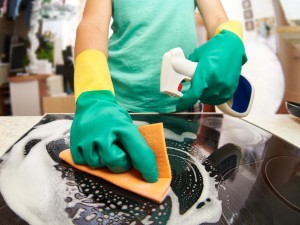 Germs and bacteria are unwelcome guests at our homes. We may not see them, yet they’re everywhere – on your doorknobs, your couch, your kitchen sink, your coffee maker – the list goes on and on.
Germs and bacteria are unwelcome guests at our homes. We may not see them, yet they’re everywhere – on your doorknobs, your couch, your kitchen sink, your coffee maker – the list goes on and on.
Germs are not only nasty, they cause all sorts of problems as well, like allergies, illness and infection. The sad part is, no matter how often we clean our homes, a small amount of germs will always be present.
One of the best ways to significantly reduce the amount of germs however, is to target the most notorious breeding environments. In this article, we’ll take a look at some of the dirtiest spots in our homes, and how we can effectively clean them.
Kitchens are the filthiest
A common misconception is that bathrooms are the filthiest areas in a home, but according to a study conducted by the National Sanitation Foundation (NSF) International, kitchens harbor way more germs than bathrooms – which is definitely a cause for concern since this is where we keep, prepare and eat food.
NSF conducted tests on 22 different households, and found Coliform bacteria on more than 75% of the dish sponges or rags, 45% of kitchen sinks, and 32% of kitchen counter tops. Coliform bacteria is a type of bacteria that includes strains such as Salmonella and E. Coli, among others.
Eliminating the germs
Needless to say, if you want to keep your family safe from germs, the kitchen is definitely one area you should focus on.
Below are some of the dirtiest parts in our kitchens, as well as some effective tips from NSF on how to keep them germ-free:
Kitchen sinks – Wash and disinfect all sides and the bottom part of your kitchen sink once or twice a week. Use a solution of one teaspoon bleach, one quart water and pour it down the drain and disposal at least once a month.
Kitchen sponges or rags – Heat wet sponges or rags in your microwave (set to high) for two minutes everyday.
Countertops – You clean these every day, but there’s always a better way to clean them. NSF recommends using hot, soapy water, rinsing, and applying a mixture of bleach and water afterwards.
Faucet handles – Simply rinsing faucet handles with water and wiping them is not enough. Use disinfecting cleaner or wipes on your faucet handles daily.
Cutting boards – Place your cutting boards in the dishwasher after every use, or hand-wash them with hot, soapy water.
Take a look at more home improvement tips by visiting this page.





